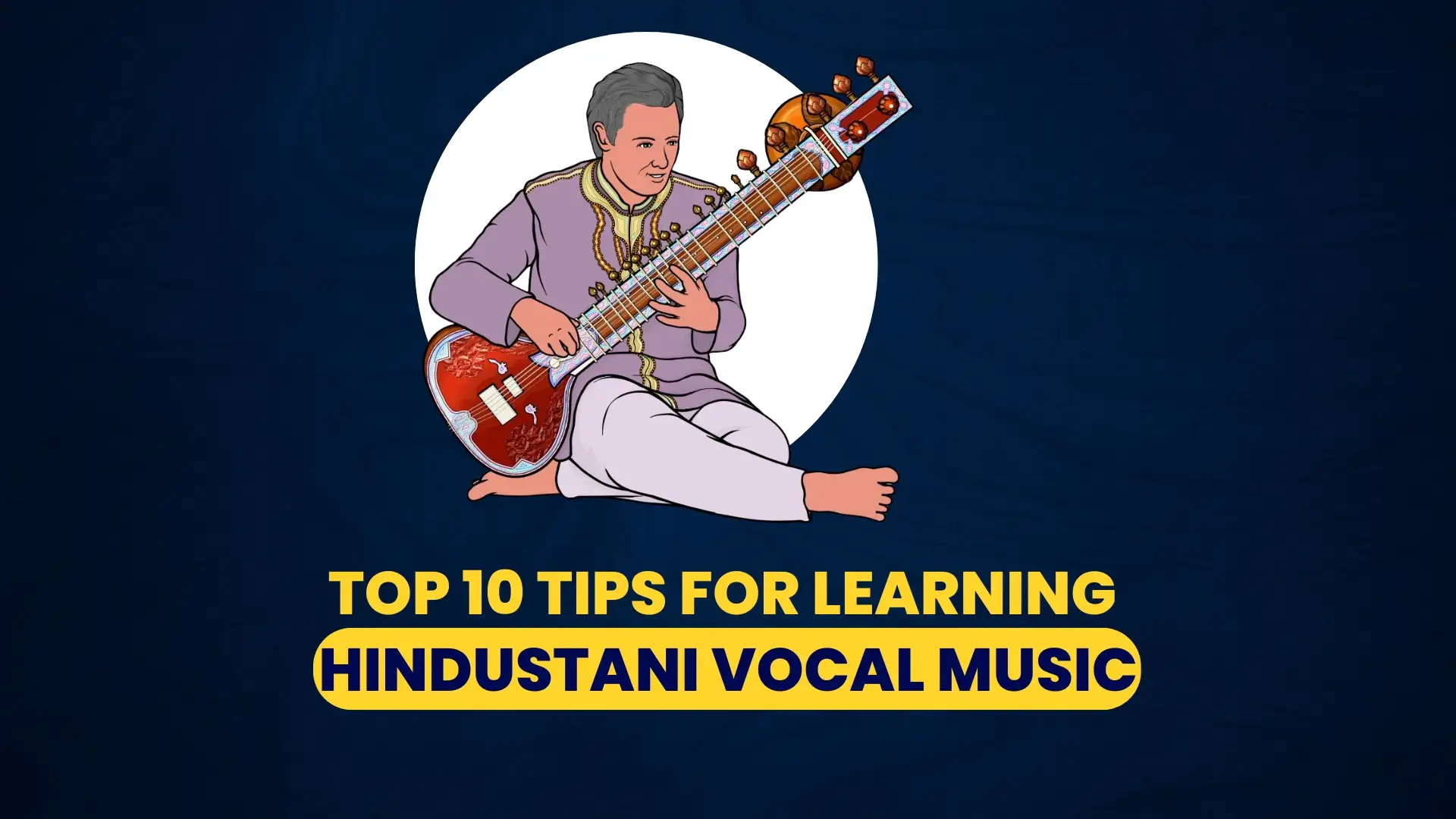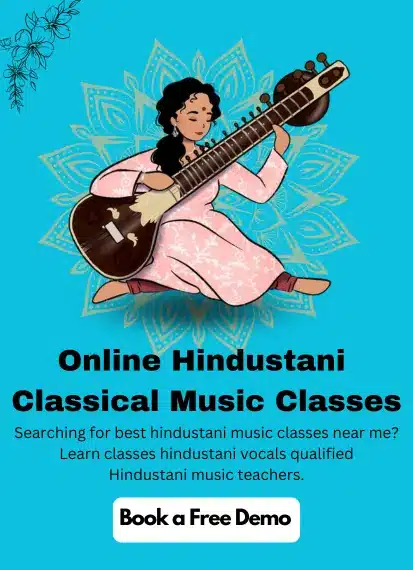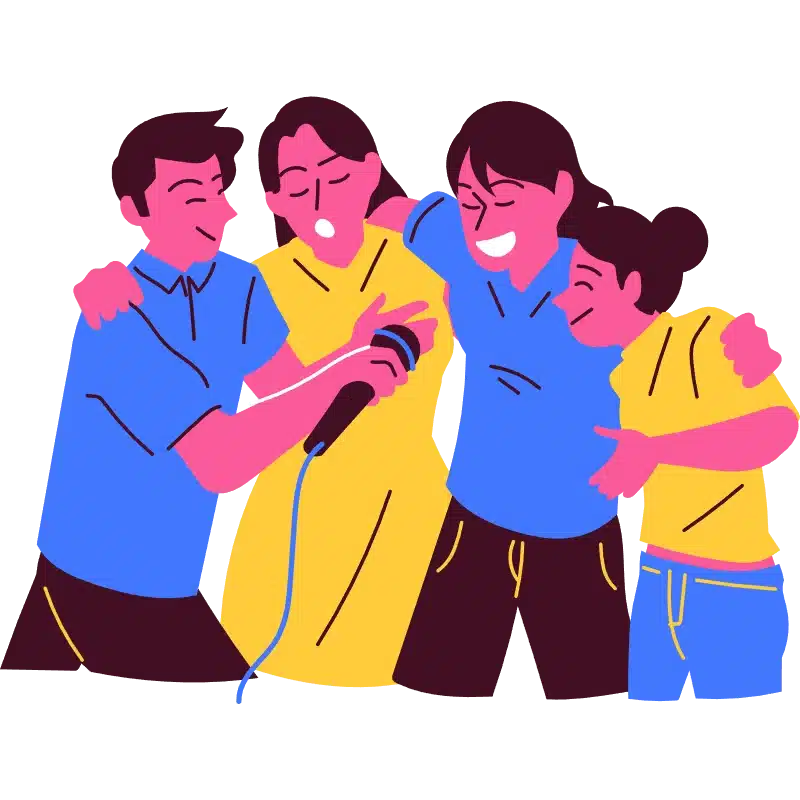Who would have thought that learning Hindustani music online could be so rewarding? This blog will be an excellent beginner’s guide to Hindustani vocal music. To make your learning Hindustani music enriching and easy, I will lay down a few pointers and tips along with the benefits of learning Hindustani vocal music.
Learn Hindustani classical music online with these practical tips.
Let’s get started.
Beginner’s Guide to Hindustani Vocal Music
Some sort of assistance from a professional, always gets the job done while learning anything. This beginners guide to Hindustani vocal music will simply be the best and most necessary assistance you can find for free. Here are 10 tips to help you achieve your goal of learning Hindustani music online.
1. Get to know the basics
There are basic elements that build this empire called Hindustani Classical music. These elements include Shruthi, Raga, Thala, Swarasthanas and many more. Understanding these concepts and how they are all connected together makes the learning process more meaningful. Every beginner’s guide to Hindustani vocal music starts with the association of Shruthi, Raga, Thala and Swaras. With that being said, let’s quickly take a turn about these basic elements.
Shruthi
Shruthi is the pitch or its frequency of every sound that is generated in music. Hindustani classical music has 22 shrutis.
Raga
Raga is the arrangement of the melodies with specific swaras in ascending and descending order. Raga always has vaadi, samvadi ie., the most important swara of a raag and the next important swara.
Thala
Thala is the rhythmic arrangement of Indian Classical Music. It provides rhythmic support to melodic(raag) compositions.
Swaras
Swaras are the musical sounds in Hindustani classical music. Every genre of music including this has 7 swaras namely Sa Re Ga Ma Pa Dha Ni Sa.
So my beginner’s guide to Hindustani vocal music begins with basic elements of this music and this is by far one of the best ways to learn Hindustani vocal music.
2. Have Professional Guidance
Although the lessons and concepts have now become easily accessible to learn Hindustani classical music online, something as rich and pure in nature should be learnt with proper guidance from a professional. One of the trouble-free ways to find guidance is probably searching ‘Hindustani vocal lessons near me’ on google.
Hindustani classical music has been taught for generations after generations through a very enlightening tradition called the Guru-Shishya-Parampara.
3. Regular Riyaz to Learn Hindustani Classical Music
My guru usually tells me there is absolutely nothing that a riyaz cannot do. Famous Hindustani vocalists spend hours and hours of a day on riyaz. There are so many Hindustani vocal exercises for beginners on free Hindustani vocal learning apps online. Whether you have a tutor or not, riyaz in Hindustani music ragas (for beginners) will make you understand the rich features and help you develop a sense of appreciation of raga, thala and swaras. There are so many rules to adhere to in this discipline and Riyaz will take you there!
Let me add a few Hindustani vocal exercises for beginners.
4. Learn Ragas and Talas in detail
Learning ragas and talas and immersing in its elegance is truly one of the benefits of learning Hindustani vocal music. Each raga has its own characteristics, mood, samay, swara structures. These are the primary factors that differentiate ragas from one another. This can deepen your understanding whether you learn Hindustani classical music online or in person. 0nce you learn a new raga, you should explore the different swara patterns by learning a sargam. Sargams can help you understand the swara pattern of that raga. Then you should try out chota kayals(short songs) to learn the raga and thala further.
5. Pay heed to different compositions
5th step in beginners guide to Hindustani vocal music is get an idea about the different compositions in existence. Each one has its own way and modulation of singing. Here are few of the compositions which famous Hindustani vocalists perform.
- Khayals (songs with one or two verses)
- Vilambit Khayals (songs sung in extremely slow tempo)
- Drut Khayals (songs sung in normal tempo)
- Dhruvpad (genre in Hindustani that has verses poetry that starts in vilambit)
- Dhamar (type of composition in druvpad containing romantic folk verses)
- Thumri (thumris are semi classical compositions containing expressive singing of words)
- Tappa (tappas are the punjabi style semi classical compositions )
6. Understand the Bhavas
In Hindustani vocal music, expressiveness of the Bhavas (literally meaning heart)is considered to be such a valuable asset. It helps a musician to truly connect with the audience and the music that they perform, Bhavas lets you sing with passion, express thoughtfulness, and emotional depth while delivering a raga. Just an important matter to keep in mind is that you need to understand the overall meaning of each bandish or a composition first hand to effectively convey the bhava or emotions.
7. Watch Live Performances
Okay, this is my personal favorite. I learnt most of the compositions by watching live performances of famous Hindustani vocalists like Begum Aktar, Ustad Rashid khan, Shuba Mudgal, Kaushiki Chakraborty and many others. For me, listening to each of their renditions in their styles helped me find my own style. It also inspires young minds to follow the traditions and discipline. You can learn the stage presentation, so many types of improvisations and so on by watching these legend perform Listen to some of my favorite compositions that i learnt while I was trying to learn Hindustani classical music online.
8. Active Listening
Engage in active listening to recordings of famous hindustani vocalists to understand or get yourself involved in the rich flavor of Hindustani classical music. This could easily be the best way to hindustani vocal music. Observe their improvisation methods and techniques used by each individual and how they seem to carry the flow of a raga without breaking the ancient rules and the exposure of their unique expression, and how they interpret ragas. To improve your own skills and comprehension, actively listen to how they use gamakas, katkas, and more importantly phrasing. And I’ve given an idea to how to learn hindustani classical music online.
9. Benefits of Learning Hindustani Vocal Music
I would like to point out that one of the greatest benefits of learning hindustani vocal music is how it connects the learners to the rich heritage and tradition of our motherland. Many bandishes in it talk about the poetry and history of Indian soil.
Moreover, learning hindustani classical music online offers a way to express our emotions. The sweet melodies of each raga, subtle rhythms, and expressive approaches enhance its learners to paint a variety of rasas and feelings.
Yet another amazing benefit of learning hindustani vocal music is that it helps oneself to gather all the wandering thoughts. We know that this discipline needs music of concentration and perseverance. As learners work to master difficult ragas, talas, and other compositions, their concentration abilities improve a lot. I think this helps in various aspects of life.
10. Listen to yourself sing
The final and the most useful tip in this beginner’s guide to hindustani vocal music is to record yourself when you practice and listen to it to analyze the techniques. Doing so would help you to keep track of your development and pinpoint areas for growth. Carefully listen to the recording paying particular attention to emotion, tone, and pitch correctness. This is a great tool for self evaluation. This is also one of the best ways to learn hindustani vocal music.
Closing thoughts!
Learning Hindustani classical music is a superb experience that calls for perseverance, humility, and a lifetime of study and development. You can always start a rewarding musical journey that will not only improve your life but also add lively elements to the rich tapestry of Indian classical music by heeding the advice and techniques provided here. For assistance do book a demo with us today! Enjoy your learning journey!
FAQs
How to sing swaras in Hindustani music
By understanding how sargam works in hindustani classical music and swarasthana works.
What are the ragas in Hindustani music?
Hindustani ragas branch out from 10 basic thaats namely bilawal, kalyan, kafi, kamaj, bhairav, bharavi, kamaj, marva, poorvi, asavari.
Is it too late to learn Hindustani vocal music?
Not at all. It is never too late to Hindustani vocal music.
Do I need any prior musical experience to learn Hindustani music?
No. you do not need any prior musical experience to learn Hindustani music.
What is the best way to start learning Hindustani vocal music?
The best way to start learning Hindustani vocal music is by doing all the tips provided in the blog above.
How much does it cost to learn Hindustani vocal music?
The cost of learning Hindustani vocal music differs from guru to guru.
Can I learn Hindustani vocal music online?
Yes, you can earn Hindustani vocal music online. There are tons of lessons available online for free.
Related Blog: History of hindustani music





































